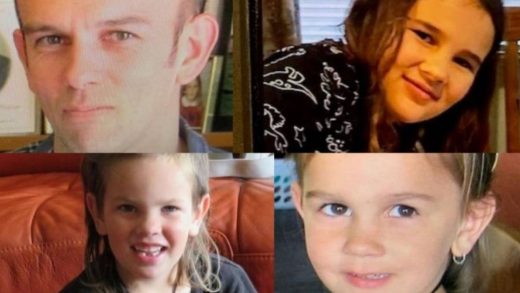
- Surgeons and MPs warned that Southland Hospital would be too small, but health officials went ahead and approved the plans anyway.
- Now, doctors are struggling to keep up as they try to fit the need of a growing population into a hospital that’s smaller than the one it replaced.
- A new hospital isn’t on the cards anytime soon.
Twenty years ago, health officials signed off on a plan that doctors warned wouldn’t work. Now, they’re struggling to serve Southlanders from a hospital that’s “fundamentally” too small. Louisa Steyl reports.
There was a time when Southland’s population was shrinking so fast, people used to joke that the last one out should switch the lights off.
It was this shrinking population forecast 20 years ago that Southland Hospital was designed on.
In the midst of a forth-coming election in 2002, surgeons and the National list MP for Invercargill were ringing alarm bells, warning that the new hospital planned for the city would be too small, but it was pushed through.
Twenty years later, Southlanders are paying the price.
READ MORE:
* Patients becoming ‘invalids’ while they wait for surgery, surgeons say
* Covid-19: Southern DHB 681 surgeries behind
* 35 surgeries postponed at Southland Hospital in first week of lockdown
* More surgeries postponed in chocka Southland Hospital
There’s not enough beds. Not enough theatre space. Not enough staff.
Southern District Health Board chief executive Chris Fleming has conceded that fundamentally, the hospital is too small.
The result? The most urgent people are taken care of but patients who are not deemed critical are left waiting months for treatment.
It’s so bad surgeons say patients are becoming “invalids with arthritic hips and knees” while they wait for surgery because there aren’t enough beds or staff to man them.
Robyn Edie/Stuff
Southland Hospital’s emergency department is too small, and it’s one of the areas of the hospital that is under pressure along with trying to attract medical staff to Invercargill.
Who is responsible?
Then-Minister of Health Annette King and other Labour government ministers approved the $69.7 million hospital in July 2002.
The hospital’s catchment sat at 82,387 people when plans were signed off, but this number was expected to shrink to 79,900 by 2015.
Instead, it grew to 134,780 by 2021.
King, Southland District Health Board chair Dennis Cairns and chief executive Dr Gershu Paul repeatedly reassured Southlanders and staff that the hospital would be adequate.
In June 2002, surgeon George Ngaei told the board that surgeries were already being postponed because of bed shortages.
The existing building was too old. There was never any doubt it needed to be replaced. But the debate centred on how big and expensive the new one would be.
Straight away there was a difference in bed numbers. The old hospital overall had 199 beds available while the new one only catered for 167. Up until April 2022, 12 of the beds in one ward were never staffed.
It was also supposed to have five operating theatres, but ended up with four – the same as the old building.
Barry Harcourt/Stuff
The new Southland Hospital was opened in September 2004. Pictured here on the big day are, from left, the deputy chairwoman of the Southland District Health Board at the time Lesley Soper, then-Prime Minister Helen Clark, Southland District Health Board chairman Dennis Cairns and Then-Minister of Health Annette King.
The Ministry of Health was rolling out a strategy that was supposed to make it easier to access a GP, and King believed this would reduce the number of patients who needed to go to hospital by up to 30% in people over the age of 75.
The idea was that Southland Hospital would be used for day surgeries with patients being sent back into the community for after care.
More acute surgeries would be sent to Dunedin Hospital.
Surgery techniques were evolving, and it was expected that people wouldn’t need to stay in hospital as long as they had before.
But it’s safe to say that didn’t pan out. The south’s population kept growing and many can’t access a GP.
Why didn’t they listen?
Was it just a matter of money?
King, who is now the High Commissioner of New Zealand to Australia working in Canberra, says her decision to sign off on the hospital was “based on the best information we had available almost 20 years ago and like any decision, hindsight provides us with the opportunity to reflect on that.”
Cairns, who was the health board chair for seven years and on the subcommittee for the new hospital build, says all hospitals being built at the time were designed with a shifting focus towards more services going out into the community.
Barry Harcourt
Former Southland District Health Board chairman Dennis Cairns remembers the planning process for Southland Hospital as long and diligent. [File photo]
In other words: people would not need to stay in hospital for long.
Southland has always got the short end of the population-based funding model, he says – which is exacerbated by trying to deliver services closer to communities, requiring more staff and infrastructure.
“There’s only X amount of money, and there’s never going to be enough,” Cairns says.
Who was speaking up at the time?
Semi-retired surgeon Mr George Ngaei left Southland Hospital 15 years ago, but he is still clearly frustrated by its size and capabilities.
He wasn’t shy speaking up 20 years ago declaring “you can’t squeeze an elephant into a rat hole” when referring to the bottleneck for surgeries caused by bed shortages.
Senior medical staff were warning the Southland DHB board that the new hospital would not have enough beds to cope with needs.
When a report proved the smaller hospital wouldn’t be adequate, the CEO at the time, Dr Gershu Paul was quoted by media as saying “they would have to make it work” because the DHB couldn’t go back to the government for more money.
It had already negotiated almost $20million on top of the $50 million the ministry initially offered.
Robyn Edie/Stuff
Surgeon George Ngaei was among the doctors who warned the health bosses 20 years ago that plans for the new hospital would not have enough beds for Southlanders.
Ngaei says decisions around the new hospital were political, and staff views at the time were ignored.
“It was either have a hospital with less capacity, or no hospital at all.”
Now, Southlanders are having to deal with higher thresholds for referrals, making it “next to impossible” to get onto a surgery wait list, he says.
“Raising the bar doesn’t erase the need.”
Former National MP Eric Roy criticised the Labour government in July 2002, telling media he believed they were delaying announcements about the hospital for fear that the reduced size would hurt them at the polls.
Kavinda Herath/Stuff
Former National Party MP and current Environment Southland councillor Eric Roy says microsurgery was seen as the answer to long hospital stays back in 2002, so it was widely believed patients would be moved through the hospital faster.
Reflecting on the fight for a bigger hospital to be built, he says an upcoming election for Labour was a bad environment for decision-making.
It felt like the mentality was “just let’s get a hospital in there’”.
Roy, who has held several Government positions and is now an Environment Southland councillor, is philosophical about the south’s population.
It would have taken a visionary with lots of energy to change minds, he says, because the population was drifting away.
Robyn Edie/Stuff
Southland Hospital surgeons say patients are “becoming invalids” while they wait for surgeries because they don’t have enough staff, beds or theatre space.
Today’s squeeze on resources
Southland Hospital has one of the highest trauma caseloads in the country because it also serves the Queenstown Lakes District, known as the adventure capital of the world.
That means people with broken legs, wrists, and pretty much anything that’s not an easy fix are sent south for urgent surgeries.
Orthopaedic clinical leader Chuck Luecker says the hospital designs never took the number of trauma cases it now deals with into account.
These urgent cases have monopolised theatre space – pushing joint replacement surgeries, for example, further down the waiting list.
“It’s the capacity to take care of our most vulnerable patients that’s being hampered,” Luecker says.
Robyn Edie/Stuff
Southland Hospital orthopaedic clinical leader Chuck Luecker says surgeons at Southland Hospital are desperate to help their patients who “are truly disabled before they are allowed an operation.” [File photo]
He has worked out that Southland Hospital would need two theatres and 98 more beds to at least be on par with other hospitals around the country.
A GP shortage in Southland also means huge numbers of people turn up to the hospital’s emergency department for treatment.
Some 3000 are not enrolled with a doctor in the south.
Struggles with staff recruitment and Covid-19 has meant more delays for surgeries and appointments – particularly in the past four years, creating backlogs DHBs around the country are trying to clear.
Wait lists keep blowing out. By the end of March 2022, 1133 patients had waited longer than 120 days for surgery at Southland Hospital – while 1064 were waiting for specialist appointments before they’re even placed in the queue for surgery – because of reduced theatre capacity, vacancies and bed blocks.
John Hawkins/Stuff
Large crowds queued up to see the inside of the new Southland Hospital during an open day in August 2004. [File photo]
Will changes be made?
Southern DHB chief executive Chris Fleming, who inherited Southland Hospital, is well aware that it is not serving the needs of Southlanders.
Clinicians have been sharing their frustrations over access to theatres, the availability of beds, and having to cancel activity because of capacity issues since January 2021, he said.
They’re also concerned that the emergency department isn’t big enough, he says.
The DHB signed off plans to expand the ED, build a fifth operating theatre and add more beds last year, but so far it’s only been able to open four more beds.
Kavinda Herath/Stuff
Southern District Health Board chief executive Chris Fleming says Southlanders are unlikely to see any significant changes to Southland Hospital as a result of the upcoming health reforms.
Fleming’s biggest frustration is the time between making a decision and seeing the result.
In February 2021, Southland-based DHB board members Lesley Soper, Kaye Crawther and Terry King asked for a strategy to address the challenges at the hospital.
Sapere Research Group will present its Clinical Needs Analysis to the board on June 8.
Its report says workforce challenges in Invercargill are the worst researchers have seen in most of New Zealand, and that there needs to be investment in rural medical centres, so they can take on some of the patient load.
The researchers say the population Southland Hospital serves will grow by 11 to 20 percent by 2038 to reach at least 198,680 and there’s a case to be made for a second base hospital in Southland and Otago.
A 30-year rolling capital plan must be developed “to deal with adequate sizing of Southland’s clinical facilities,” it says, along with a five-year plan to expand access to clinic spaces in rural hospitals.
Speaking on behalf of Interim Health New Zealand’s Health Infrastructure Unit, deputy director general John Hazeldine says it isn’t actively considering improving physical space at Southland Hospital.
The southern region is receiving significant investment in the form of a $1.47 billion new hospital in Dunedin,” he says. “ …when completed, this hospital will deliver benefits for the entire Southern region.”
The reality of this though for Southlanders is that they may have to travel to Dunedin for more services, despite having their own hospital, albeit too small to cater to their needs, right on their doorstep.


